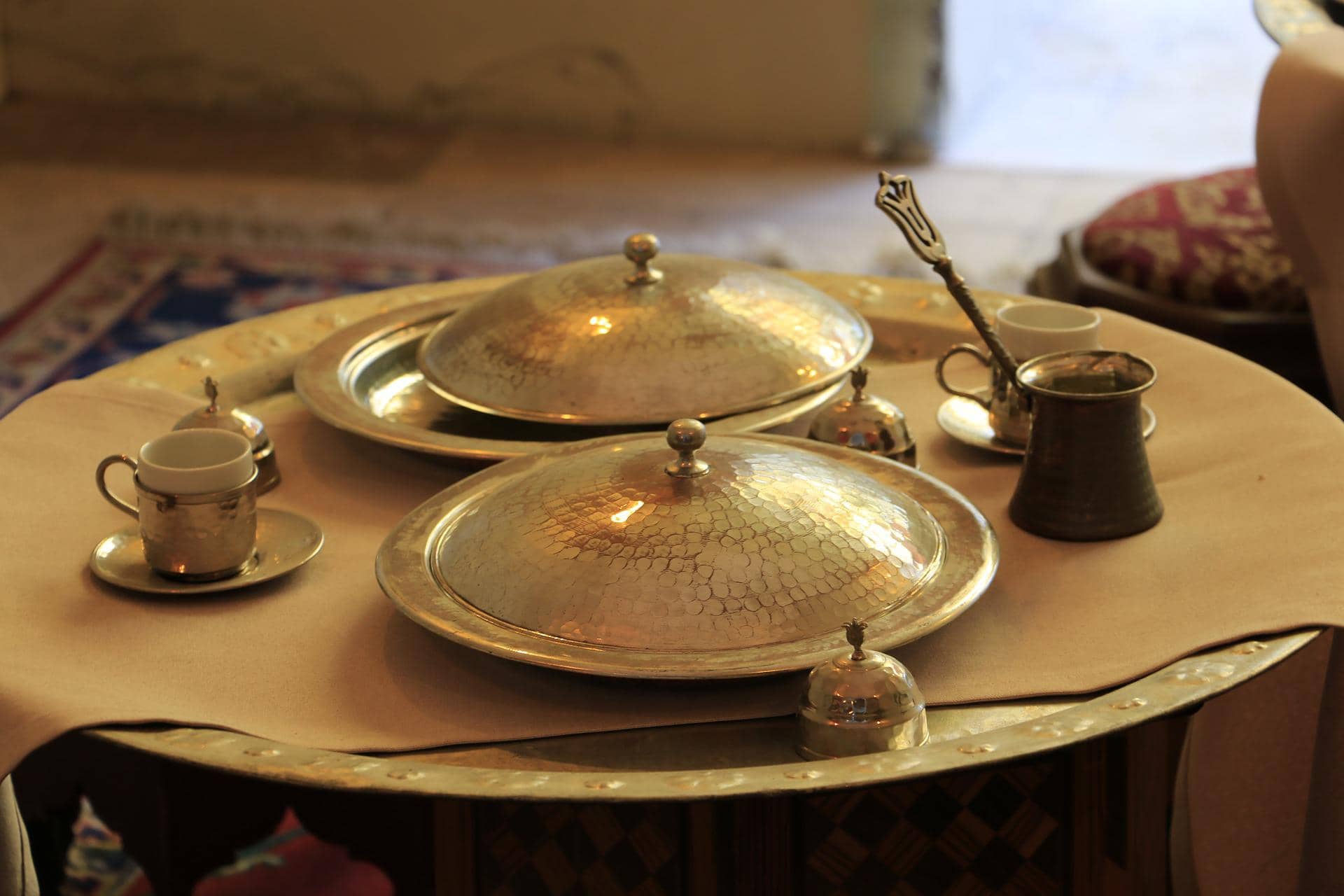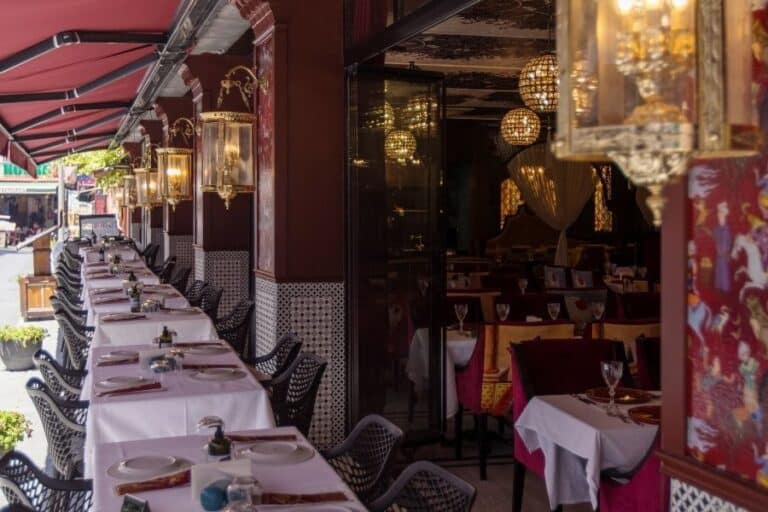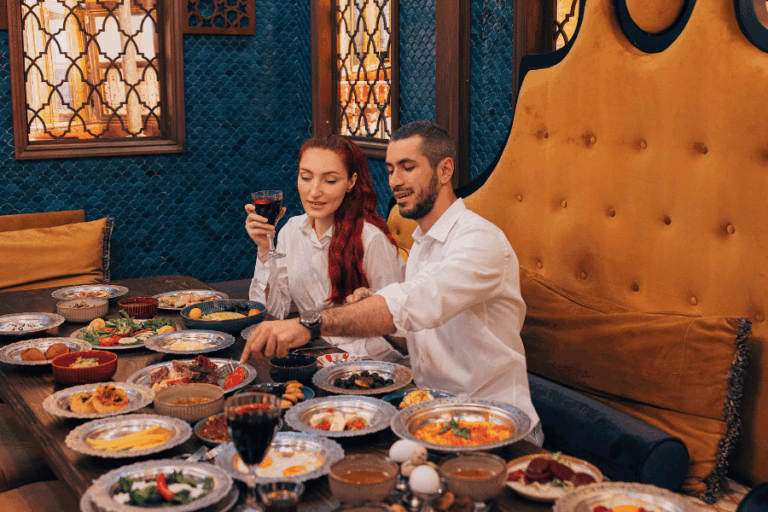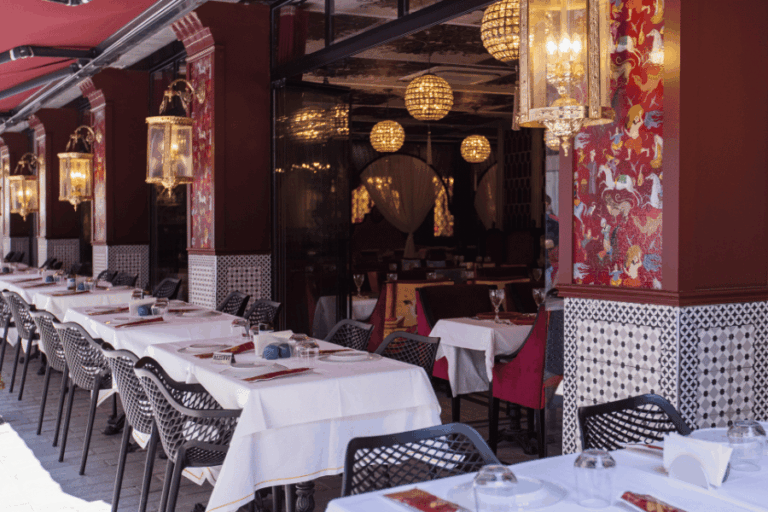In the Ottoman period, palace dishes and food manners were always at the forefront. Meat types, rice, and wheat, sherbets, and desserts were generally preferred. In addition, honey, cream, molasses, and tahini were among the indispensable products of the table. Ottoman period eating habits first thing that comes to mind is respect for food. When the meal time came, the tables set on the ground were arranged and from that moment on, nothing else was taken care of. Food tools such as forks and knives were not found in the food culture. The food bowls used were made of wood, earthenware, copper, silver, and rarely gold. There was a practice such as using a spoon and even carrying the spoon with you to the places you go. Pastries such as bread, yufka, flatbread, and pita, which were eaten with the meal, were quite common and were eaten by hand.
The eating habits of the Ottoman period were generally inspired by the palace cuisine. Food culture differs in every region of Anatolia. It was different in the sections where agriculture and livestock were made and different in the sections where fishing was done. The Turkish society, which has moved from nomadic life to a settled order, has included products such as cereals, vegetables, and fruits in its cuisine over time. For this reason, it is possible to see fruit in a meat dish in Ottoman cuisine.
What Was Eaten During the Ottoman Period?
Due to the fact that Ottoman Istanbul was home to many cultures, the food culture was quite rich. Each changing period brought new products to the palace kitchen. Different products from western and eastern countries have been effective in the emergence of different tastes. At the beginning of the Ottoman period, eating habits are the dishes made with meat. Consumption of mutton, lamb, and goat meat was quite high. Rather than the prevalence of beef today, its use in making pastrami and sausage was common at that time. Rice with a rich content served with meat dishes is also very popular. Butter was used to cook these dishes because it was more delicious.
One of the most distinctive tastes among the eating habits of the Ottoman period is yogurt, which is frequently consumed today. Yogurt was found in every home because it was both medicinal and easily accessible. Even in cases where food could not be cooked, bread was chopped into yogurt and eaten. Some dishes made during the Ottoman period are as follows;
- Sultan’s soup with marrow
- Cherry Soup
- Cesmi Nigar Soup
- Wedding soup
- Toyga aşı soup
- Kavata soup
- Goose kebab
- Mutancana
- Pastry with feta cheese filling
- Mahmudiye
- Beyrani
- Milk kebab
- Tas kebab with rice
- Zerde
- Revani
- Keşkul
- Palace halva
- Vezir parmagi
These dishes, which are still popular today, are only a short section of Ottoman cuisine. In the Ottoman food culture, it has become almost mandatory to have a wide variety on the table, especially when there is a banquet or celebration. In the meals, bitter, sour and sweet flavors were served together at the same time. Black pepper, cinnamon, zahter, coriander, cardamom, and anise were used in almost all dishes of the period. Therefore, there is a widespread spice and herbal culture in Istanbul.
An Ottoman Restaurant in Istanbul: Deraliye Restaurant
When the eating habits of the Ottoman period are briefly summarized, a plain table can be defined as a rich meal. Located in the center of old Istanbul, Deraliye Restaurant has been bringing you delicious Ottoman palace dishes for 25 years. In addition to its service and service quality, it is the most popular place in Istanbul with its unique location.
It is the only indispensable address for Ottoman cuisine in Istanbul. When you enter this place, which is very close to Hagia Sophia and Topkapi Palace, you will feel the breeze of Ottoman palaces. You can have this experience not only with the food but also with the design of the place. You can make a reservation to taste delicious palace dishes at this place in Sultanahmet, located on the Historic Peninsula.








